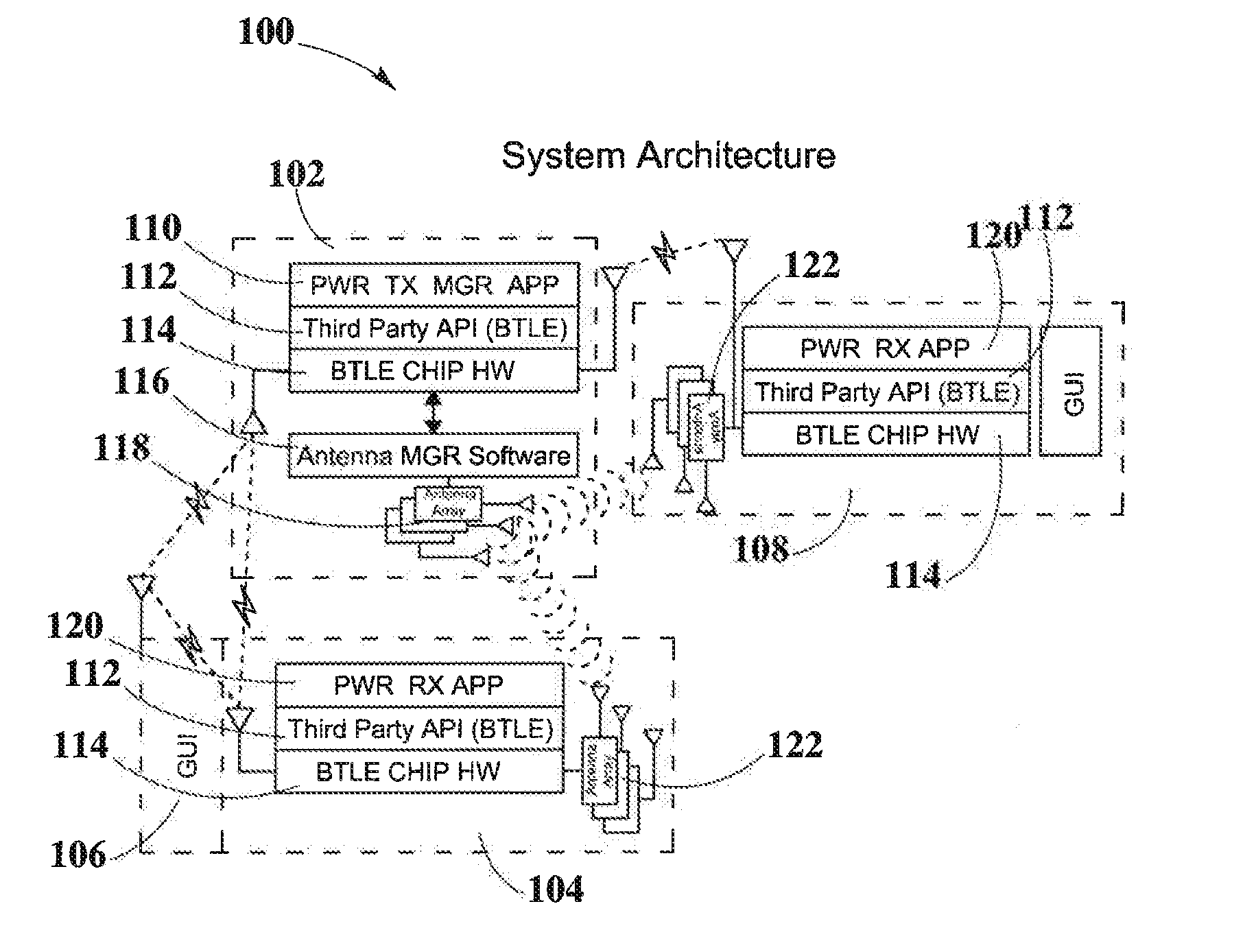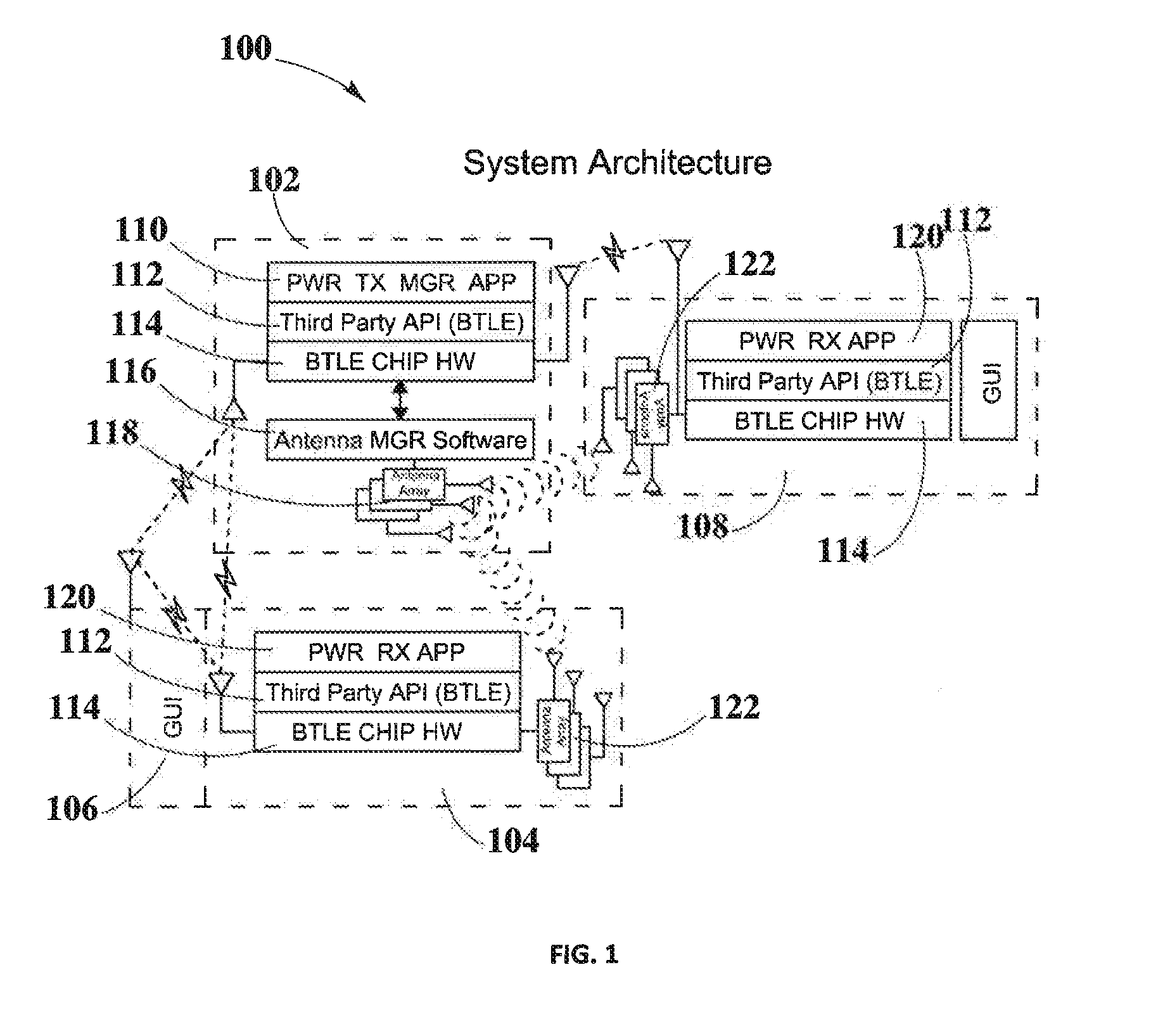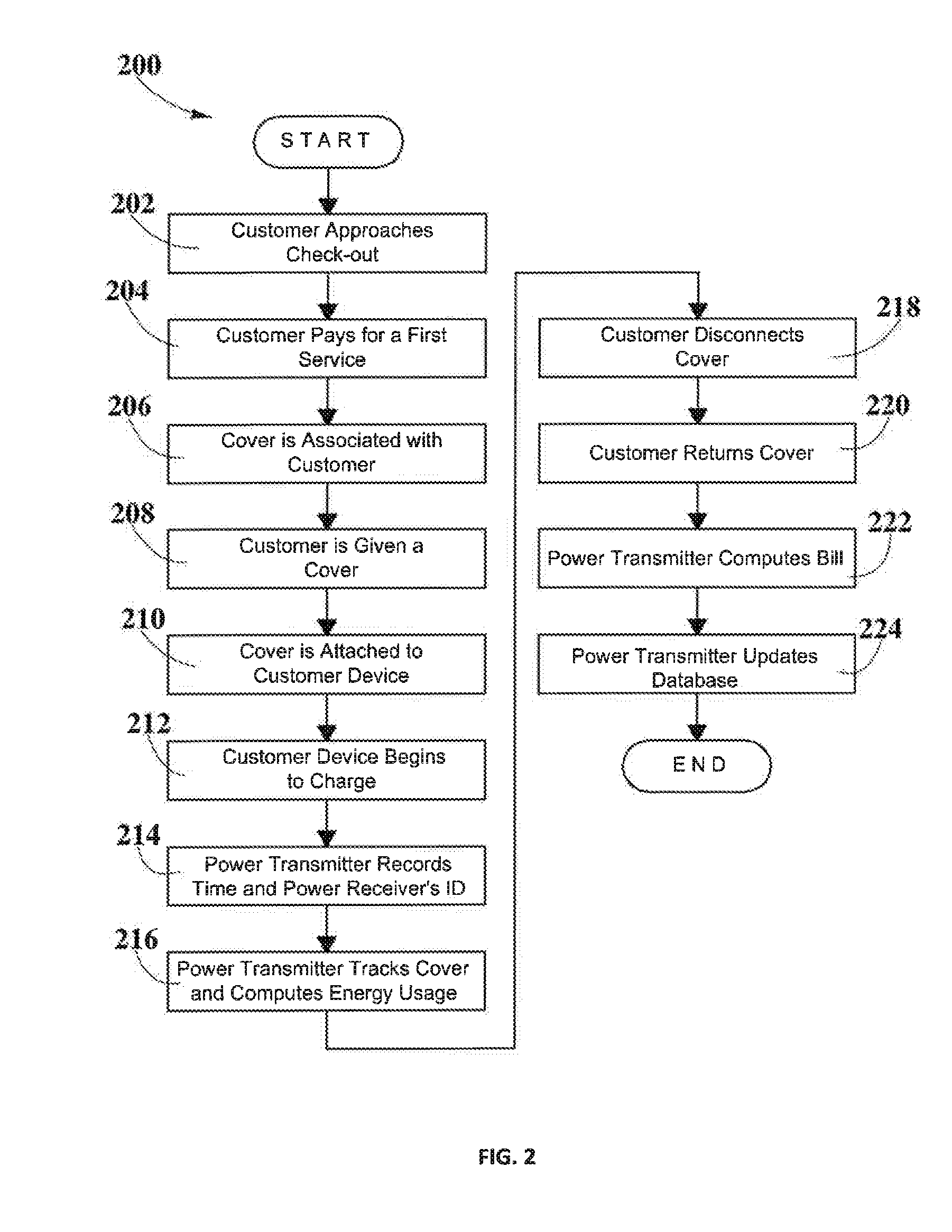Systems and Methods for Power Payment Based on Proximity
a technology of proximity and power payment, applied in the direction of transformers, inductances, transportation and packaging, etc., can solve the problems of inoperable electronic devices, burden on users, and tedious activities
- Summary
- Abstract
- Description
- Claims
- Application Information
AI Technical Summary
Benefits of technology
Problems solved by technology
Method used
Image
Examples
examples
[0053]In example #1 a customer enters a coffee shop and buys a cup of coffee. At checkout, the costumer asks for power to charge a smartphone. The customer's smartphone includes a suitable GUI for interacting with a wireless charging system. A cover with an embedded power receiver is associated with the customer and the customer receives the cover. Then, the smartphone is paired with a power receiver embedded in the smartphone cover. The smartphone starts receiving power and the power transmitter keeps records of the time, amount of power delivered to the smartphone, position of the power receiver and any suitable information needed. After some time, the smartphone reaches a desired level of charge and the customer disconnects the power receiver and returns it to the check-out. The power transmitter computes the bill based on the amount of power delivered to the smartphone and updates the database. The customer's electronic device is charged and the process ends.
[0054]In example #2 ...
PUM
 Login to View More
Login to View More Abstract
Description
Claims
Application Information
 Login to View More
Login to View More - R&D
- Intellectual Property
- Life Sciences
- Materials
- Tech Scout
- Unparalleled Data Quality
- Higher Quality Content
- 60% Fewer Hallucinations
Browse by: Latest US Patents, China's latest patents, Technical Efficacy Thesaurus, Application Domain, Technology Topic, Popular Technical Reports.
© 2025 PatSnap. All rights reserved.Legal|Privacy policy|Modern Slavery Act Transparency Statement|Sitemap|About US| Contact US: help@patsnap.com



